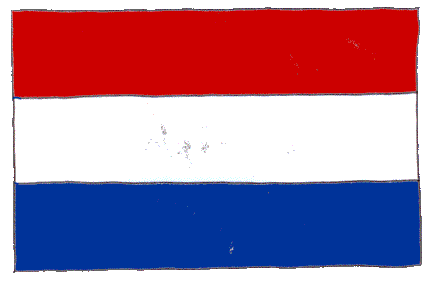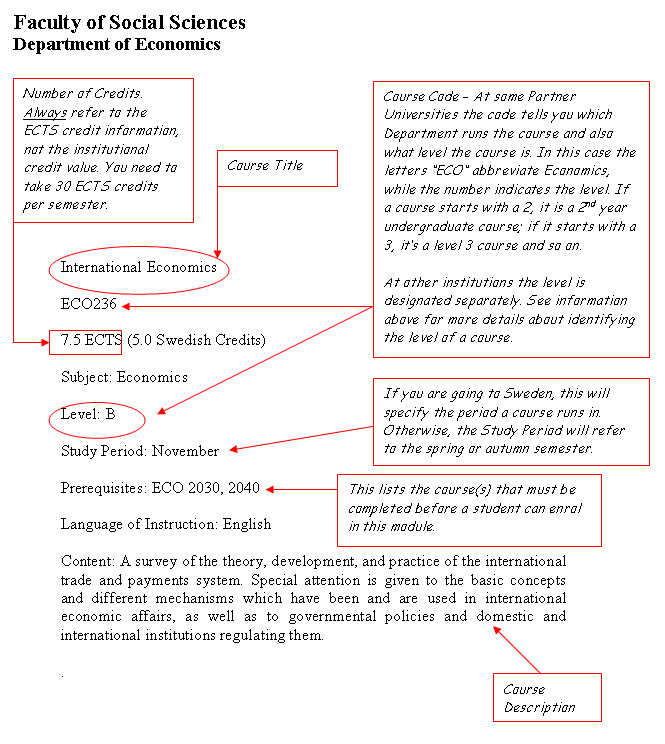
Consult the list of Courses Taught in English to
see what courses are on offer. You can either consult the paper copy in the
Study Abroad Resource Room or look online at:
to
see what courses are on offer. You can either consult the paper copy in the
Study Abroad Resource Room or look online at:
Upload your partner university catalogue link here
Selecting Modules: 
If your time abroad does not count towards your overall
degree classification and you are taking modules abroad for credit, rather than
for grade transfer, you will probably have a lot of choice in what you can take
whilst you’re away.
However, if the grades that you gain at your Partner University ARE going to count towards your overall degree result, then there will probably be quite strict rules about what you can and can’t take. The rules outlined below are for guidance only.
Either way, you should check what the requirements are for you with your Study Abroad Adviser.
SUBJECT:
First you need to check your home university's Undergraduate Module Catalogue to see what you would be taking if you stayed at home. In subjects like Economics and Natural Sciences you may need to select courses overseas that exactly replace what you would have taken here. Humanities subjects tend to be more flexible and you may have a bit more freedom to make your selection.
![]() REMEMBER:
IN ALL CASES YOU NEED TO CHECK WITH YOUR ACADEMIC ADVISER TO SEE WHAT THE
REQUIREMENTS ARE FOR YOUR SUBJECT(S)!
REMEMBER:
IN ALL CASES YOU NEED TO CHECK WITH YOUR ACADEMIC ADVISER TO SEE WHAT THE
REQUIREMENTS ARE FOR YOUR SUBJECT(S)!
LEVEL:
 In
The Netherlands courses are offered at Bachelors and Masters level. Undergraduate
students cannot take first year Bachelors level courses or Masters level courses,
but all other Bachelors courses should be OK.
In
The Netherlands courses are offered at Bachelors and Masters level. Undergraduate
students cannot take first year Bachelors level courses or Masters level courses,
but all other Bachelors courses should be OK.
 Similarly, in Iceland courses
taught in English are offered at the undergraduate or postgraduate level.
You will take undergraduate level courses.
Similarly, in Iceland courses
taught in English are offered at the undergraduate or postgraduate level.
You will take undergraduate level courses.
 At Norwegian universities you should
be able to identify the level of a course by its code. Course numbers between
100 and 199 are generally introductory, or first year. Courses 200-299 are
advanced Bachelors courses and are likely to be the most appropriate for undergraduate
students. 300 level courses are Masters level and are off limits to undergraduates.
At Norwegian universities you should
be able to identify the level of a course by its code. Course numbers between
100 and 199 are generally introductory, or first year. Courses 200-299 are
advanced Bachelors courses and are likely to be the most appropriate for undergraduate
students. 300 level courses are Masters level and are off limits to undergraduates.
 Turkish undergraduate courses
are also generally denoted by a numerical code. Courses from 100-400 are appropriate
for undergraduates, while 500+ are suitable for Masters level students.
Turkish undergraduate courses
are also generally denoted by a numerical code. Courses from 100-400 are appropriate
for undergraduates, while 500+ are suitable for Masters level students.
 In Sweden the level of a course
is denoted by letters A through to D, with A being easiest and D most difficult.
Alternatively, a scale of basic-, intermediate- and advanced- undergraduate
may be used. Students going to Sweden should aim to take intermediate courses
if possible, but the number of courses available may mean that you have to
select options based on what is available.
In Sweden the level of a course
is denoted by letters A through to D, with A being easiest and D most difficult.
Alternatively, a scale of basic-, intermediate- and advanced- undergraduate
may be used. Students going to Sweden should aim to take intermediate courses
if possible, but the number of courses available may mean that you have to
select options based on what is available.
RESERVES:
It’s a good idea to select more courses than you actually need. If you have reserve choices pre-approved, your life will be much easier if you find that your first choice options aren’t running once the semester starts. Because you already have your home adviser’s approval, you won’t have to wait for them to confirm your changes by email!PRE-REQUISITES:
Make sure you satisfy the pre-requisites. A pre-requisite is a course that you must take and successfully complete BEFORE you can take the next course. Obviously, you will not have the pre-requisite courses exactly as stated in your Partner University’s system, but they will assume that you have taken similar courses at your home university. For example: if you have taken a Basic Accounting course at home, you should be able to take an Intermediate Accounting course abroad, BUT you should not try to take both an Intermediate and Advanced course in the same semester. Nor should you try taking a course that includes Intermediate Accounting as one of its prerequisites. This logic applies to all other subject areas as well.
Decoding the Course Listings
Partner University course information is likely to be very different from what you are used to. Make sure you read the explanatory instructions carefully. To help you make sense of the abbreviations used by Partner Universities we’ve included a sample below. There will be some variations between Partner Universities, but this should give you a basic idea of how to interpret the Course Listings in English.
